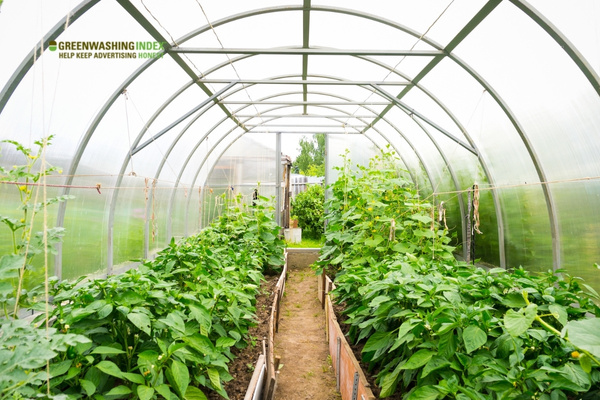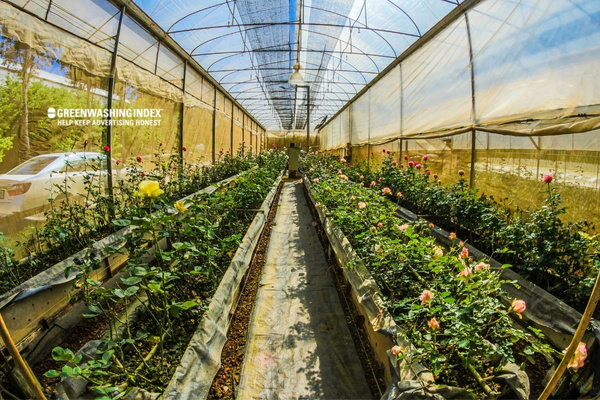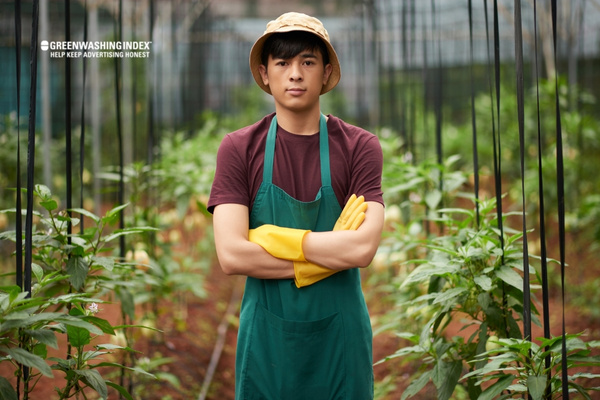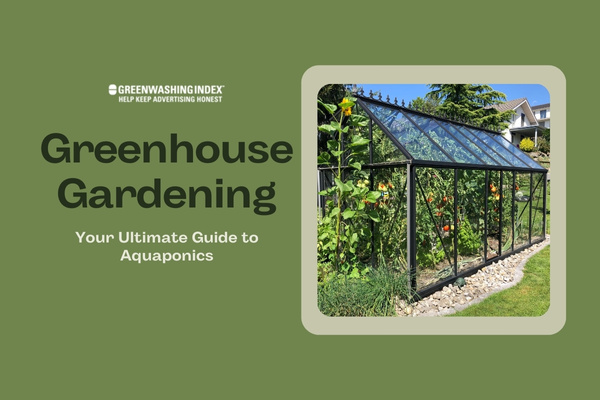As a greenhouse gardening enthusiast, you understand there’s more than meets the eye when it comes to optimizing your indoor space. But have you ever considered incorporating aquaponics into your gardening strategy? Trust me; you’re missing out on a groundbreaking innovation that seamlessly merges aquaculture and hydroponics.
If the phrase “Greenhouse Gardening: Your Guide to Aquaponics” piques your curiosity, here’s what it means in simpler terms. It involves creating an enclosed ecosystem where fish and plants thrive symbiotically. Imagine fish waste providing essential nutrients for your vegetables while the plants naturally purify the water — a win-win for both parties!
What You’ll Discover Here:
- Concrete guidelines on setting up an efficient aquaponic system in your greenhouse.
- Successful combinations of plant species and fish types for effective symbiosis.
- Proven tips on maintaining a healthy environment for optimal growth.
- Actionable steps to gradually scale up operations from home gardening to commercial levels.
- Essential recommendations address typical hurdles during expansion phases.
- Insightful pointers on transitioning from hobbyist growing into profitable commercial production.
Understanding the Role of Aquaponics in Greenhouse Gardening is Crucial
Immersing yourself in the world of greenhouse gardening can be a transformative experience. You initially begin with barely a patch of greenery, and then watch as that flourishes into a bountiful ecosystem. One stellar technique aiding in this process is aquaponics; an often underappreciated method that has revolutionized sustainable farming.
An Overview of Aquaponics
Aquaponics is a unique blend of two methods—hydroponics and fish farming—that serve to benefit each other in a symbiotic relationship known as fish-plant symbiosis. It employs the nutrient-rich water from fish ponds or tanks to irrigate and fertilize plants, essentially creating an organic circle that benefits both parties.
Some compelling reasons for integrating hydroponics are:
- Sustainability: Aquaponics solves sustainability issues by recycling water, reducing waste, and utilizing natural fertilization through fish excrement.
- Efficiency: It results in faster plant growth compared to traditional soil-based gardening.
- Cost-effectiveness: Not having to purchase artificial fertilizers can significantly cut down ongoing costs.
- Ease: Maintaining an aquaponic system requires less effort in terms of tilling, watering, and dealing with soil-borne pests.
- Controlled Environment Agriculture: With aquaponics integrated into your greenhouse gardening routine, you have precise control over your plant’s climate conditions, pH levels, nutrient intake – virtually every variable at play!
Understanding this technique can drastically improve your greenhouse gardening prowess while making it environmentally friendly.
The Interdependence Between Greenhouse Gardening And Aquaponics
Aquaponics breathes life into greenhouse gardening by forming an ecological cocoon around your green friends. It accomplishes this by producing optimal nutrients from the fish waste while lowering instances of pests.
Key points reflecting interdependence are:
- Mutual Growth: The plants grow healthier, courtesy of the nutrient-rich water from fish tanks. Concurrently, the plants filter and clean this water for the fish.
- Decreased Dependence on External Inputs: Greenhouse gardening with aquaponics requires fewer external nutritional inputs and chemical treatments, thereby promoting self-sufficiency.
- Year-Round Production: Seasonal constraints are virtually non-existent as environmental control in greenhouse gardening provides the perfect ambiance for plant growth.
Basking in this synergy, your greenhouse becomes a hotbed for accelerated plant growth and vigor. They help each other thrive, creating an eco-friendly cycle that contributes remarkable gains in productivity and sustainability. Hence, integrating aquaponics into your greenhouse gardening routine can result in an affluent oasis where produce thrives all year round.
Building Your Own Aquaponics Greenhouse Garden
Are you craving for fresh vegetables year-round? Considering an eco-friendly step towards sustainable farming? Set up your own aquaponics greenhouse garden. It’s simpler than you may think and immensely rewarding.

Starting with Basics
The beauty of greenhouse gardening using aquaponics lies in its simplicity and efficiency. An aquaponic system, essentially, is a marriage between hydroponics (soil-less plant cultivation) and aquaculture (fish farming). The integration forms a fish-plant symbiosis that speeds up plant growth while filtering water for the fish too.
So what do you need to start your very own organic gardening abode?
- Aquarium: 20-gallon tanks serve as an ideal starting point. As your confidence grows, you can gradually upscale.
- Fish: Choose hardy species that can thrive in varying conditions – goldfish are a great pick for beginners!
- Aquatic Plants: The likes of spinach, lettuce, or kale work well in such systems.
- Water Pump and Air Stones: These help circulate water and entrain oxygen into it, vital to both plant growth and fish survival.
- Grow Beds & Media: Be it pebbles or coir, the choice is yours! Select one that will support the plant roots best.
Now let’s map out the process:
- Connect your pump to set up a water delivery system for your plants.
- Install air stones inside the tank.
- Add fish to the aquarium.
- Plant seedlings onto your grow bed.
- Start circulating water from the tank to the grow bed regularly.
- Monitor closely while nature does its magic!
Presto! With these steps ticked off, you’re all set on your journey towards sustainable farming through greenhouse gardening!
Choosing The Right Plants And Fish
Believe it or not – All plants or fish aren’t suited for an aquaponics system. Let’s explore more about the ideal candidates for your controlled environment agriculture.
When it comes to fish, you need species that can tolerate varying water conditions. Hardy and adaptive, goldfish make a perfect starting point for beginners.
Moving onto plants, those able to thrive in a wolfed-down version of nutrients are your best allies. Leafy greens like spinach, kale, or lettuce fit the bill. Herbs such as basil or mint prove productive choices too.
As far as vegetables go, tomatoes might be somewhat ambitious for a starter but doable nevertheless with consistent effort and monitoring.
Remember – while plant choice is mostly driven by personal consumption preferences and regional climatic conditions; fish selection heavily banks on their tolerance range towards changing conditions within the tank (pH levels, nitrate concentration, etc.)
By integrating aquaponics into greenhouse gardening – not only does one enjoy fresh produce right at home but also contributes significantly toward eco-friendly gardening techniques!
Operating Your Aquaponics Greenhouse System
Aquaponics greenhouse gardening requires particular attention to ensure that your eco-friendly garden thrives. Considerations such as maintaining a healthy environment and conducting regular checks are essential elements in running an aquaponic system. Let’s delve into these aspects.
Maintaining A Healthy Environment
Preserving an ideal balance in the aquaponics system is essential for effective greenhouse gardening. Here are key considerations:
- Temperature Control: Different plants and fish thrive at varying temperatures, so it’s vital to maintain the right heat level consistent with your species of choice. Typically, a temperature range of 70-86 degrees Fahrenheit is suitable for most plants.
- Lighting Sources: Plants require light for photosynthesis, necessitating the need to provide adequate natural or artificial light in your greenhouse.
- Water Levels: Regularly check that there is enough water in the reservoir, but not overly filled to prevent oversaturation or flooding.
- Ph Levels: Check pH levels regularly since different aquatic life forms and plants require specific pH ranges.
Other factors include proper aeration to promote oxygen circulation and nutrient management for plant growth.
Regular Checks & Balances
Routine checks are critical to detect issues early on before they escalate into complex problems affecting greenhouse gardening. The following guide contains valuable points:
- Plant Health: Regularly check leaves coloration and sturdiness to ensure they are healthy.
- Fish Health: Ever swim around your fish tank critically observing each? It can reveal important insights about their health— an integral part of fish-plant symbiosis.
- Water Quality Tests: Conduct routine water quality tests as poor-quality water could drastically affect both plant and fish health adversely.
- System Components Checkup: Regularly inspecting all components — pumps, pipes, lights— ensures everything is working as expected.
Greenhouse gardening with aquaponics integration is like conducting a beautiful orchestra where each player has a crucial part. Hence, it requires constant nurturing for all elements to remain in harmony towards creating and maintaining an environment conducive to sustainable farming.
These organic gardening methods not only promote healthy produce but also contribute significantly to preserving Mother Earth.
Expanding Your Aquaponics Greenhouse Garden
As you dive deeper into the world of greenhouse gardening, you might start thinking about expanding your aquaponics operation. It may seem like a daunting task, but with the right tips and considerations, it can be a seamless transition.

Scaling Operations
There are key moments in your greenhouse gardening journey when you start feeling comfortable with your existing setup. It’s during these instances that thoughts of expansion often occur. So how do you exactly scale up your operations? Here are some important nuggets of advice:
- Assessing Readiness: Before anything else, establish whether or not it’s the right time for scaling up. This often depends on two factors: firstly, are you able to handle the working demands of a larger setup; and secondly, have you fully mastered the operations at its current size?
- Site Expansion: The next big step involves increasing your operational space to house more plants and fish tanks. Always remember that scaling will necessitate a proportional increase in distance.
- Increasing Plant and Fish Population: One phenomenal aspect of aquaponics is the fish-plant symbiosis which is vital for sustainability in greenhouse gardening. More plants equate to more fish – ensure they correlate proportionally.
- Upgrading Systems Equipment: Scaling up means purchasing additional or larger equipment to cater to extended demands.
Bear in mind that while growth can be good, within reason of course – complicated issues may arise without proper planning or too rapid an expansion.
Dealing With Challenges
Scaling operations come with its own set of challenges. Here are some common problems along with solutions:
- Imbalanced Nutrient Levels: Poor balance between fish waste production (source of plant nutrients) and plant uptake (nutrient absorption) could lead to unhealthy plants or augmented algae growth.
- Solution: Regularly monitor water chemistry levels to ensure all essential nutrients needed by plants are present. Stay proactive about adjusting your fish and plant population levels accordingly.
- Pest and Disease Management: Like any farming endeavor, pests and diseases present a constant battle in greenhouse gardening.
- Solution: Create an integrated pest management plan that includes inspecting newly introduced plants for pests, introducing beneficial insects into the environment, and using organic pesticides when necessary.
- Financial Constraints: Scaling operations can prove costly, especially with initial capital outlays required for site expansion and equipment upgrades.
- Solution: Draft a detailed financial report breaking down all your investment costs compared to projected income from crop sales.
Converting To Commercial Scale Production
Growing your love for greenhouse gardening into a full-fledged commercial enterprise is nothing short of exciting. Ah, but the devil lies in the details! Space, resources, finances – all should be planned diligently. Here I share my thoughts on transitioning from a backyard hobbyist to a marketplace player and evaluating financial prospects.

Moving From Backyard To Marketplace
The process of switching from your cozy backyard garden to a larger commercial setup requires more than simply expanding operations. Here’s what you need to consider:
- Business Plan: Start with a solid business plan, folks! Will you specialize in certain plants? Do you have connections with retailers or restaurants who could become potential buyers?
- Space Requirements: Greenhouse gardening on a commercial scale requires ample space. If your siting options are limited, vertical farming can be an excellent option.
- Human Resources and Machinery: Are you ready to manage additional staff? And yes, machinery becomes paramount as hand tools may not suffice anymore.
- Regulations & Licensing: Each state in the U.S. has its own set of agricultural regulations which need to be followed. Reach out to local authorities; they can help guide you through the essential paperwork involved.
Financial Considerations And Profitability Analysis
Before diving into setting up your commercial-scale greenhouse garden, let’s talk numbers!
- Initial Investment: Building or buying an existing greenhouse can range anywhere between $5 – $50 per square foot depending on size and features included.
- Maintenance Costs: Electricity for heating/cooling/lighting systems, water usage charges, and hiring additional employees are some regular costs that will hit periodically.
- Profits Projection: Predicted income should surpass projected expenses. The USDA provides data on annual sales of aquaponic produce where stats show considerable growth over the years which are indicative of rising consumer interest in fresh sustainable produce.
Economic feasibility is just one aspect – do remember sustainable farming isn’t just good for the planet, but also for your pocket in the long run. Analyze profits and costs with thorough research to establish a firm groundwork before kickstarting your venture.
Remember, Rome wasn’t built in a day neither will be your commercial greenhouse garden. Patience, grasshopper!
FAQs
How do you maintain a healthy aquaponics system?
Maintaining a healthy aquaponics system involves regular checks and balances. You need to consider temperature control, lighting sources and water levels. Routine inspections for any potential pest or disease outbreaks are also pivotal.
What are the best plants and fish for an aquaponics system?
Leafy greens like lettuce and herbs fare well in an aquaponics system, as do tomatoes and cucumbers. As for fish, tilapia, catfish, koi, and goldfish prove to be great cooperative residents of your greenhouse gardening endeavor.
Are there any common mistakes to avoid when starting up?
Yes. Overloading your system with too many fish can lead to adverse consequences. Also neglecting measuring critical parameters like pH level or temperature can cripple the fish-plant symbiosis essential for successful greenhouse gardening.
Conclusion
My journey into greenhouse gardening utilizing aquaponics has been both enlightening and rewarding. I’ve learned that through sustainable farming and controlled environment agriculture, we can raise a variety of plants in eco-friendly gardening techniques.
This integrated system not only enhances plant growth but also promotes fish-plant symbiosis, a true testament to nature’s balance. As well, the move from backyard hobbyist to commercial production was challenging but completely doable with the right financial considerations and profitability analysis. Greenhouse gardening is indeed a viable solution for our ever-growing global food demands while caring for Mother Earth.
Key Takeaway Points
- Greenhouse gardening is an environmentally friendly alternative that combines hydroponics integration and aquaponics.
- Creating your own aquaponics garden requires correct knowledge about suitable plant & fish species.
- Running an efficient system needs continuous checks & balances to maintain a healthy environment.
- It’s feasible to transition from hobbyist growth into commercial production with proper planning & financial insights.



